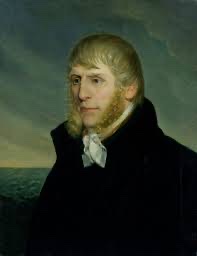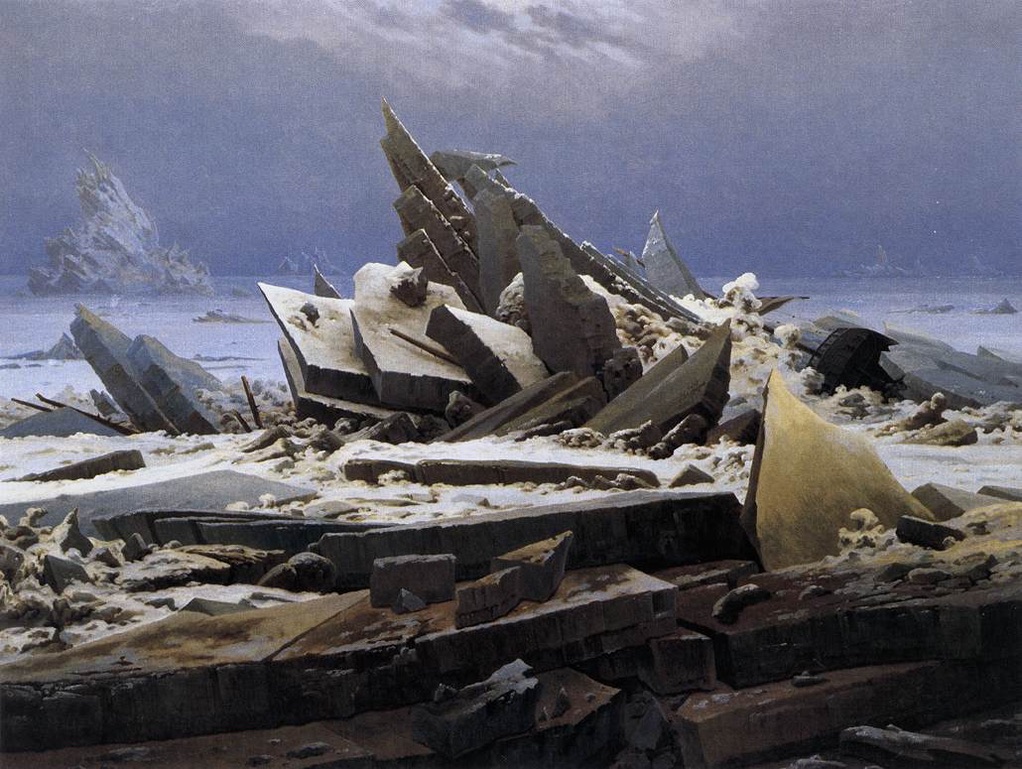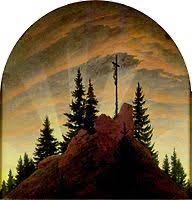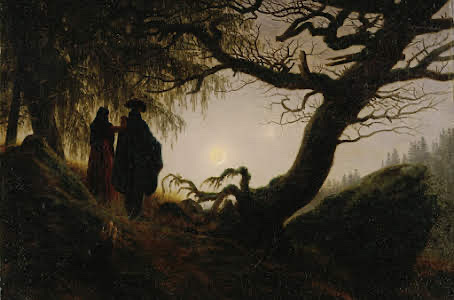
(1774-1840)
Casper David Friedrich was a German landscape painter and draughtsman during the Romantic period and was one of the movement’s most notable painters. Some of the main elements within his painting were crooked trees, figured silhouettes, foggy hills, and referencing gothic architecture.
One of the most notable paintings done by Friedrich is “The Cross in the Mountains”(c.1807) also known as Tetschen which we wanted to focus on the ethereal naturalistic environment instead of the obvious religious symbolism. Another popular work was “The Sea of Ice”(c.1822) depicting an angular seascape symbolizing the ominous strength of nature.




His landscapes moved viewers since they added an emotional touch to nature with their dramatic and often eerie appearances left an allegorical feel. Friedrich wanted to stray away from classic approaches to capturing a landscape and instead try to invoke a more spiritual essence and deep contemplation into his works. Similarly to Existentialists and Surrealists in the mid-1900s. The sublime energy that radiated from his paintings was admired in Germany at the time because the country was filled with over-materialistic ideals and disillusionment, making his thought-provoking artwork highly appreciated.
The romantic movement was fueled by emotion and bringing liveliness back into art after stoic past art eras. However, the emotions that were typically idealized at the time were love and passion but Friedrichs work romanticized more mysterious, depressing emotions making him stand out from the rest and adding even more sustenance to his paintings in my opinion.
October 25, 2021 at 5:33 pm
Lauren,
Solid work on Friedrich here! You’ve obviously had a real connection to his paintings. In the past he was a favourite choice of students and no less so with both cohorts this year. You have good information and bring some personal thoughts and insights to the works in question. I’m giving you a 2/2 on your first two posts. Well Done!
Jeff